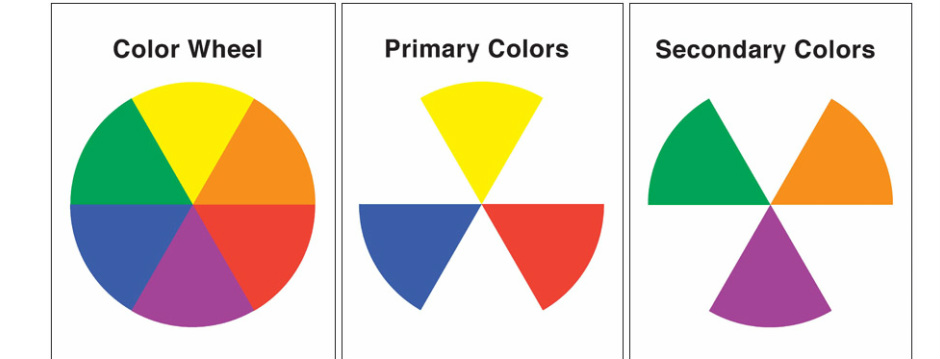

There exist three primary colors, namely blue, yellow and red. This especially applies to those in the decorations and design industry. You, however, need to be very cautious when working with a color wheel because there’s more to mixing colors than mixing primary colors. It does not only tell you how colors relate with each other but also indicates which ones work together and those that don’t. The importance of color wheels is overwhelming. One typical example of the RGB color wheel is Canva’s color, which is also designed for online use.
#Secondary color wheel tv
This is because it refers to mixing different lights, like TV screen or desktops. RGB (red, green and blue), on the other hand, is mainly designed for online use. Artists mostly use RYB (red, yellow and blue) color wheel because it helps in the combination of paint colors.

To date, there exist two types of color wheels: RYB and RGB. Similarly, color combination plays a role in determining the relative position of various colors to find colors with a pleasing effect. There is a way you can use the color wheel to find the perfect harmony: through the rules of color combination. They form an integral part of artists and designers activities because they use them to create a particular feel or look.

Have them put their names on their color wheel and store them so they can refer to them whenever they need to.Those that look attractive together are referred to as color harmony. Review primary, secondary, warm and cool colors with the class. To remind us of all of the color schemes we have learned, use your black marking pen to label each triangle by writing in the outer edge of the plate. When we look out over the ocean we see blues and greens and violets. These colors are like the ocean which cools us off from the warm sun. The cool colors are blues, greens and violets. We can remember them easily because they are like the colors in the sun which keeps us warm. Warm colors are reds, yellows and oranges. Notice that if we draw a line across our color wheel between the yellow orange and over to the red violet, our wheel is equally divided into two sets we call the warm and cool colors. Finally, let's look at still another set of colors called warm and cool. Be sure to control your crayons and do not start scribbling. You should end up with a pretty solidly colored area. To mix crayons, begin by coloring the first color lightly onto your paper. The tertiary colors are red violet, red orange, blue violet, blue green, yellow orange and yellow green.

We will fill in the tertiary colors which are created when one primary and one secondary color are mixed. Next, let's get some practice mixing colors. Finally, red and blue make purple, so the triangle between red and blue needs to be purple. Since yellow and blue make green, color the triangle between these two primary colors with your green. Because red and yellow make orange, color orange in the triangle between the red and yellow triangle. Color each of the three triangles the color they should be. Leave room between the primary and secondary color for yet another triangle. On your paper plate draw three more triangles equally spaced. These are the colors we get when we mix two primary colors together. Next are the secondary colors, orange, green and purple (also called violet). Make on red, one yellow and one blue coloring them in dark and solid. Draw three triangle equally spaced on your paper plate. But with these three colors we can make many other colors. We cannot use any other colors to make a red or yellow or blue. These three colors are called primary because they are the first and most important colors. We will begin with the primary colors which are red, yellow and blue. We will make our own color wheel on a paper plate using crayons. Today we are going to learn about the color wheel and how the colors are ordered. Red, yellow, blue, orange, green and purple crayons, a paper plate (cannot be Styrofoam), a black marking pen The students will make their own color wheel. The students will know what the primary, secondary, warm and cool colors are.


 0 kommentar(er)
0 kommentar(er)
